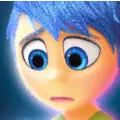In 2020, a web film named "Love and Monsters" topped the charts in multiple countries on Netflix, drawing in a huge fan base for monstrous creatures. This year, the film remarkably found its place among the nominees for the Oscars' Best Visual Effects award in May, emerging as one of the dark horses in the ceremony.
At a time when audiences seem increasingly desensitized to visual effects-heavy films, what makes an apocalypse-themed comedy centered around special effects grab everyone's attention again? As an anonymous Oscar visual effects voter put it, "'Love and Monsters' better fits the spirit of the award." Indeed, the film invested much effort in crafting the virtual world and its creatures. Let's delve into the specifics of the monster designs.

The creatures in "Love and Monsters" were created by Mr. X and Mill Film, evoking the influence of stop-motion animation and the master of monster effects, Ray Harryhausen. The director initially conceived a series of unique features for the monsters, serving as the starting point for the later visual effects animation team's work.
In "Love and Monsters," the story revolves around Joel (portrayed by Dylan O'Brien from "The Maze Runner") venturing out from an underground bunker after seven years of a post-apocalyptic world ravaged by nuclear war and mutated creatures in search of his girlfriend Aimee (played by Jessica Henwick). Throughout his surface journey, Joel encounters a series of monster attacks and survives, accompanied by a dog.
The film showcases 13 unique creatures, most of which can survive in sunlight, while a few must hide in darkness. Each animal has many details; the designers aimed to make them beautiful yet intricate. The design process incessantly added textures, creating hundreds of hidden details.


Renowned film art director Dan Hennah, known for works like "The Lord of the Rings" and "The Hobbit," oversaw the movie. The visual effects team and animation crew continuously explored the creatures' plausibility in the real world in collaboration with the art department.
They had to understand the appearance and behaviors of various insects, amphibians, and crustaceans and then exaggerate their transformations. Additionally, each creature's interactions with the post-apocalyptic environment had to be considered, and some even required reflexive behaviors akin to those in typical environmental climates. However, due to the enormous workload, some aspects of some creatures were simplified. For instance, the Birdazzard in the film amalgamates details from various insects, with special consideration given to its attack and walking mannerisms.

The most challenging creature in terms of visual effects was the Siren, a centipede-like monster without visible organs. She required complex binding relationships to avoid collisions between her body and appendages. She was also the only creature that needed post-production modifications to make her more horrifying, such as increasing body proportions and adding more limbs.


The cutest creature was the Rock Snail, which sought only cold environments. The designers drew inspiration from the flow of lava to conceive its movement, and its eyes were modeled after a chicken's. The look and protrusions were playful ideas in the design but also served narrative purposes, making it appear harmless.


The worm-like Queen Sand-Gobbler was the most disgusting and hunger-driven creature. In the chase scenes between it and Joel, extensive storyboards were used. As the first CG creature, it was a litmus test for the visual effects team. Every shot had to consider pacing, how the Sand-Gobbler gradually closed in, and how it exploded when attempting to kill the protagonist for the third time.


The Hell Crab was the most complex yet satisfying creature, comprised of hundreds of parts, including six legs, barnacles, and seaweed on its shell. Initially perceived as an attacking boss on the beach, it eventually proved to be a prisoner controlled by pirates. Since it was showcased in a large-scale event, its effects were relatively intricate, requiring interactions and fracturing with the environment, with its movement patterns being a significant challenge.


Regarding the creature attributes, the Hell Crab was designed based on real crab-like creatures but exaggerated and modified in size, weight, and movement. Because it needed eye contact with Joel and expressed the creature's emotions, special attention was given to the Hell Crab's eyes, striking a balance between anthropomorphic and realistic features.
The film's concept designer for creatures included Andrew Baker, who primarily collaborated with the director and the art director. Additionally, 3D modeler and creature concept designer Mickael Lelièvre also participated in the design of the Queen Sand-Gobbler.








Share your thoughts!
Be the first to start the conversation.